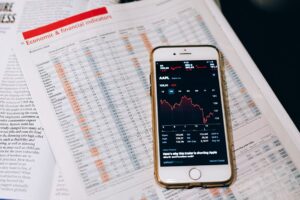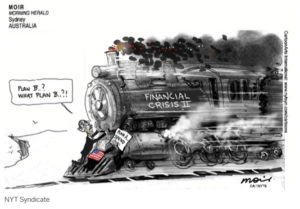
Written by Sanju Subnani
Article Summary
A recommendation to buy Fannie Mae common stock was posted to the firm’s website on November 26, 2022.[1] In summary, the recommendation was based on the Treasury’s outline for an end to Fannie Mae and Freddie Mac’s 15-year conservatorship.[2] However, a jury deemed the Treasury’s 2012 actions unlawful in August 2023 and the court awarded Fannie and Freddie’s shareholders.[3] In this article, the firm will examine the companies’ conservatorship, general corporate law, and a potential valuation for Fannie Mae’s common shares. The firm has concluded that the win for shareholders on August 14th, 2023, may have accelerated the exit from conservatorship faster than previously anticipated.
Fannie & Freddie’s Conservatorship
On September 6, 2008, Fannie Mae and Freddie Mac were placed into conservatorship by the Federal Housing Finance Authority (FHFA) after facing combined net losses of $109 billion. The Treasury bought $100 billion of each of Fannie and Freddie’s preferred stock as a method of keeping the companies afloat. Under the agreement, if Fannie and Freddie’s net worth went negative, the Treasury would buy more senior preferred stock to restore a positive net worth. The agreements required Fannie and Freddie to pay a 10% preferred stock dividend to the Treasury based upon a “fixed-rate dividend formula.”[4] The fixed-rate formula was tied to the size of the Treasury’s investment.[5]
Within the first three quarters of conservatorship, Fannie Mae spent one-third of its Treasury credit commitment; Freddie Mac spent more than half of its portion.[6] In May 2009, the Treasury increased its committed capital to $200 billion each. In December 2009, the Treasury provided more than $200 billion each. The total commitment grew from $400 billion to $445.5 billion for both companies by the end of 2012. From December 2008 through December 2011, Fannie and Freddie were using the committed capital from the Treasury to pay the preferred dividends owed to the Treasury.[7] “Because of the fixed-rate dividend formula, the more money Fannie and Freddie drew upon, the larger their dividend obligation to the Treasury became.” Fannie and Freddie found itself in a loop of drawing capital from the Treasury to pay dividends back to the Treasury.[8]

The Corporation’s Choice
General corporate law outlines the powers of a corporation and its directors.[9] The concept of the separate legal personality is one of the most litigated concepts in corporate law.[10] When the owners of a business form a public corporation, a separate legal body is created.[11] Even if a large shareholder holds all the shares, he or she is not the corporation. Creditors and shareholders do not have any property or equitable interest in the assets of the corporation.[12] The corporate body has a legal personality separate and independent from the identity of its shareholders.[13] Corporations have power to borrow money, issue notes, bonds, and other obligations to promote the business.[14] Corporations can lend, invest, and reinvest funds.[15] Under the standard rules of corporate law, a company’s board of directors only has legal authority to declare dividends to shareholders when the company has retained earnings.[16] No dividends can be paid unless the board decides to exercise its authority by declaring a dividend. The corporation owns itself and it decides what to do with its net profits.[17]

Net Worth Sweep
In August 2012, the Treasury changed the fixed-rate dividend formula to a variable dividend formula. This change shifted net profits from Fannie and Freddie to the Treasury in what was known as a “net worth sweep.” The variable dividend formula was tied to the companies’ net worth. Under the new formula, the companies were required to pay a dividend if their net worth exceeded a predetermined capital reserve. In other words, if Fannie and Freddie had a net profit, all profits would be owed to the Treasury. If there weren’t any profits, nothing would be owed. As a result, Fannie and Freddie could not use the Treasury’s capital to pay the dividend.[18] This meant Fannie and Freddie’s board of directors could not retain earnings in profitable quarters as any profits were swept to the Treasury. The net worth sweep limited the companies’ abilities to raise capital in public markets.[19] The Treasury allowed each company to only issue new common shares once the Treasury exercised its warrants to acquire 79.9% of Fannie and Freddie’s common stock. And secondly, once all material litigation regarding the conservatorship was resolved, only then could the companies be permitted by the Treasury to issue up to $70 billion in new stock issuances.[20]
In 2013, the companies paid a total of $130 billion in dividends. From 2013 to 2016, the payments to the Treasury totaled approximately $200 billion under the net worth sweep. Fannie and Freddie overpaid at least $124 billion more than the companies would have owed had they had continued to pay under the fixed-rate formula that was previously in place.[21] Shareholders sued the FHFA claiming the net worth sweep caused a decline in share value by placing the FHFA and Treasury’s interests ahead of Fannie and Freddie’s stakeholders and shareholders.[22] The jury agreed and awarded shareholders $612 million.[23] The verdict suggests general corporate law and the concept of the separate legal personality still holds weight despite whomever the largest shareholder may become.

Fannie Mae’s Common Stock Valuation
The firm is long Fannie Mae common stock so the firm will focus on Fannie Mae’s valuation. As of 2022, Fannie Mae’s annual net income was $12.9 billion.[24] Net income is a company’s residual profit after all expenses of a corporation have been paid.[25] Net income divided by the total shares outstanding results in a company’s earnings-per-share or EPS.[26] Fannie Mae’s total outstanding shares equates to approximately 1.15 billion.[27] Fannie Mae’s EPS is found below.
EPS = $12.9B Net income / 1.15B Shares =
Fannie’s EPS = 11
A P/E ratio is a calculation used to compare a stock’s valuation to see how relatively cheap or expensive it may be. The lower the P/E ratio, the cheaper or undervalued an asset may be and vice versa.[28] The “P” is the price while the “E” is the EPS. Fannie Mae’s current stock price as of September 12, 2023, is $0.70. Fannie Mae’s P/E ratio is found below.
P/E = $0.70 Price / 11 EPS
Fannie’s P/E = 0.06
In comparison, the current P/E ratio of S&P 500 as of September 12, 2023, is 25.52. Historically, the highest P/E ratio of the S&P 500 has been 131, a record low of 5.31, and a median value of 17.85. Typically, the P/E ratio has range from 19.28 to 27.90.[29] If the firm takes the S&P 500’s lowest recorded P/E ratio of 5.31 and assumes Fannie’s P/E rises to 5, the calculation for finding Fannie’s price at a 5 P/E is found below.
P/E = Price / EPS
5 = $X Price / 11 EPS
5 = $55 / 11 EPS
Solving Fannie’s price at a P/E ratio of 5 would result in a price of $55 for Fannie Mae common stock. A P/E ratio of 1 for Fannie Mae would equate to a minimum share price of $11. The stock price is $0.70 as of September 12, 2023.
A P/E ratio of 5, results in an underpricing of 78x.
A P/E ratio of 1, results in an underpricing of 15x.
Subnani Investment Research, LLC believes Fannie Mae common stock is one of the most undervalued assets in the stock market. The firm upgrades its BUY to a STRONG BUY rating on Fannie Mae common stock. To become a client, contact Sanju via ssubnani@sinvestsllc.com or direct message.

[1] https://sinvestsllc.com/buy-rating-fannie-mae-fnma-0-43-otcmkts/
[2] https://home.treasury.gov/news/press-releases/sm1236
[3] https://nationalmortgageprofessional.com/news/shareholders-fannie-mae-freddie-mac-awarded-612-million#:~:text=Victory%20comes%20after%20a%20previous%20trial%20ended%20in,to%20the%20United%20States%20for%20the%20public%20benefit.
[4] https://www.cbo.gov/system/files/2020-08/56496-GSE.pdf
[5] https://www.supremecourt.gov/opinions/20pdf/19-422_k537.pdf
[6] https://www.heritage.org/markets-and-finance/report/revising-the-preferred-stock-purchase-agreements-fannie-mae-and-freddie
[7] https://www.fhfa.gov/DataTools/Downloads/Documents/HPI/Market-Data/Table_1.pdf
[8] https://www.supremecourt.gov/opinions/20pdf/19-422_k537.pdf
[9] https://delcode.delaware.gov/title8/c001/sc02/index.html
[10] Max Radin, ‘The Endless Problem of Corporate Personality’ (1932) 32 Colum. L. Rev. 643.
[11] Stout, Lynn A. The Shareholder Value Myth: How Putting Shareholders First Harms Investors, Corporations, and the Public, Berrett-Koehler, San Francisco, 2013, pp. 40–41.
[12] “Macaura v Northern Assurance.” LawTeacher.net. 11 2013. All Answers Ltd. 09 2023 https://www.lawteacher.net/cases/macaura-v-northern-assurance.php?vref=1.
[13] Murray A. Pickering, ‘The Company as a Separate Legal Entity’ (1968) 31 Mod. L. Rev. 481.
[14] Delaware General Corporate Law. Chapter 1. Subchapter 02. Powers. § 122. Specific powers. 13. https://delcode.delaware.gov/title8/c001/sc02/index.html
[15] Delaware General Corporate Law. Chapter 1. Subchapter 02. Powers. § 122. Specific powers. 14. https://delcode.delaware.gov/title8/c001/sc02/index.html
[17] Stout, Lynn A. The Shareholder Value Myth: How Putting Shareholders First Harms Investors, Corporations, and the Public, Berrett-Koehler, San Francisco, 2013, pp. 40–41.
[18] https://www.supremecourt.gov/opinions/20pdf/19-422_k537.pdf
[19] https://nationalmortgageprofessional.com/news/shareholders-fannie-mae-freddie-mac-awarded-612-million#:~:text=Victory%20comes%20after%20a%20previous%20trial%20ended%20in,to%20the%20United%20States%20for%20the%20public%20benefit.
[20] https://home.treasury.gov/news/press-releases/sm1236
[21] https://www.supremecourt.gov/opinions/20pdf/19-422_k537.pdf
[22] https://casetext.com/case/berkley-ins-co-v-fed-hous-fin-agency
[23] https://www.glenbradford.com/wp-content/uploads/2023/08/13-mc-01288-0392.pdf
[24] https://www.fanniemae.com/media/46276/display
[25] https://www.investopedia.com/terms/n/netincome.asp
[26] https://www.wallstreetprep.com/knowledge/earnings-per-share-eps/
[27]https://www.marketbeat.com/stocks/OTCMKTS/FNMA/#:~:text=Outstanding%20Shares%201%2C158%2C090%2C000,Free%20Float%201%2C146%2C507%2C000
[28] https://www.investopedia.com/terms/p/price-earningsratio.asp
[29] https://www.gurufocus.com/economic_indicators/57/pe-ratio-ttm-for-the-sp-500






